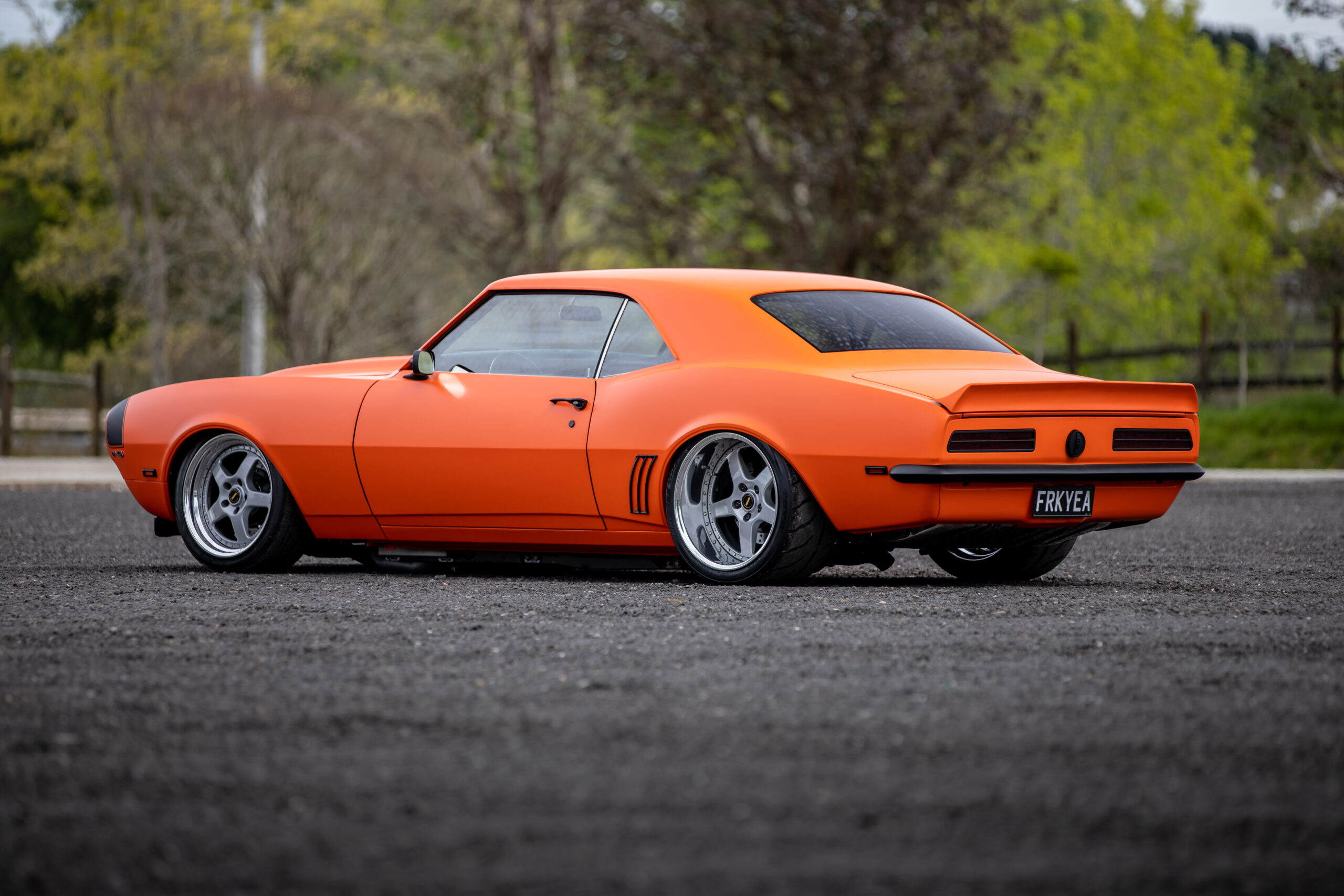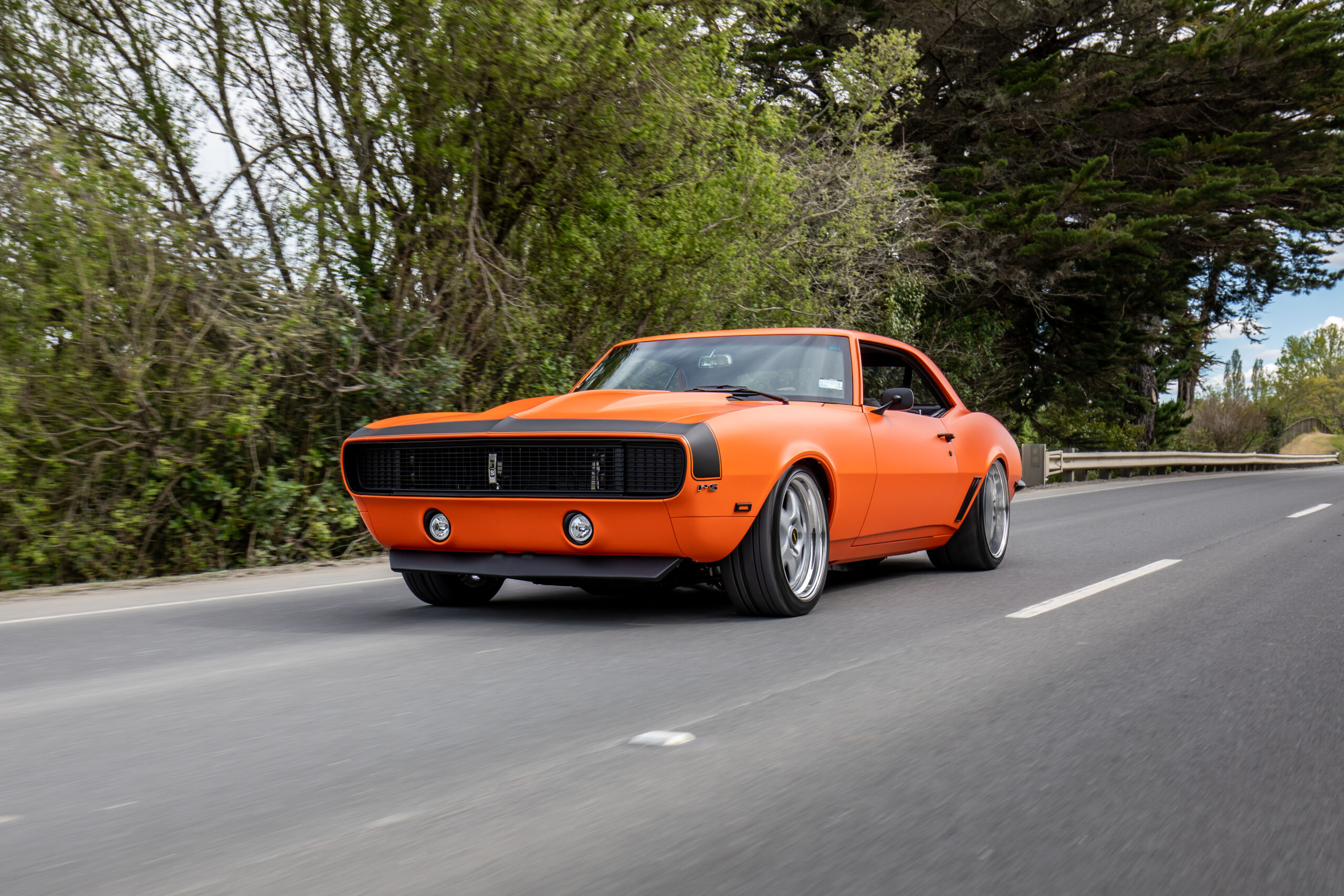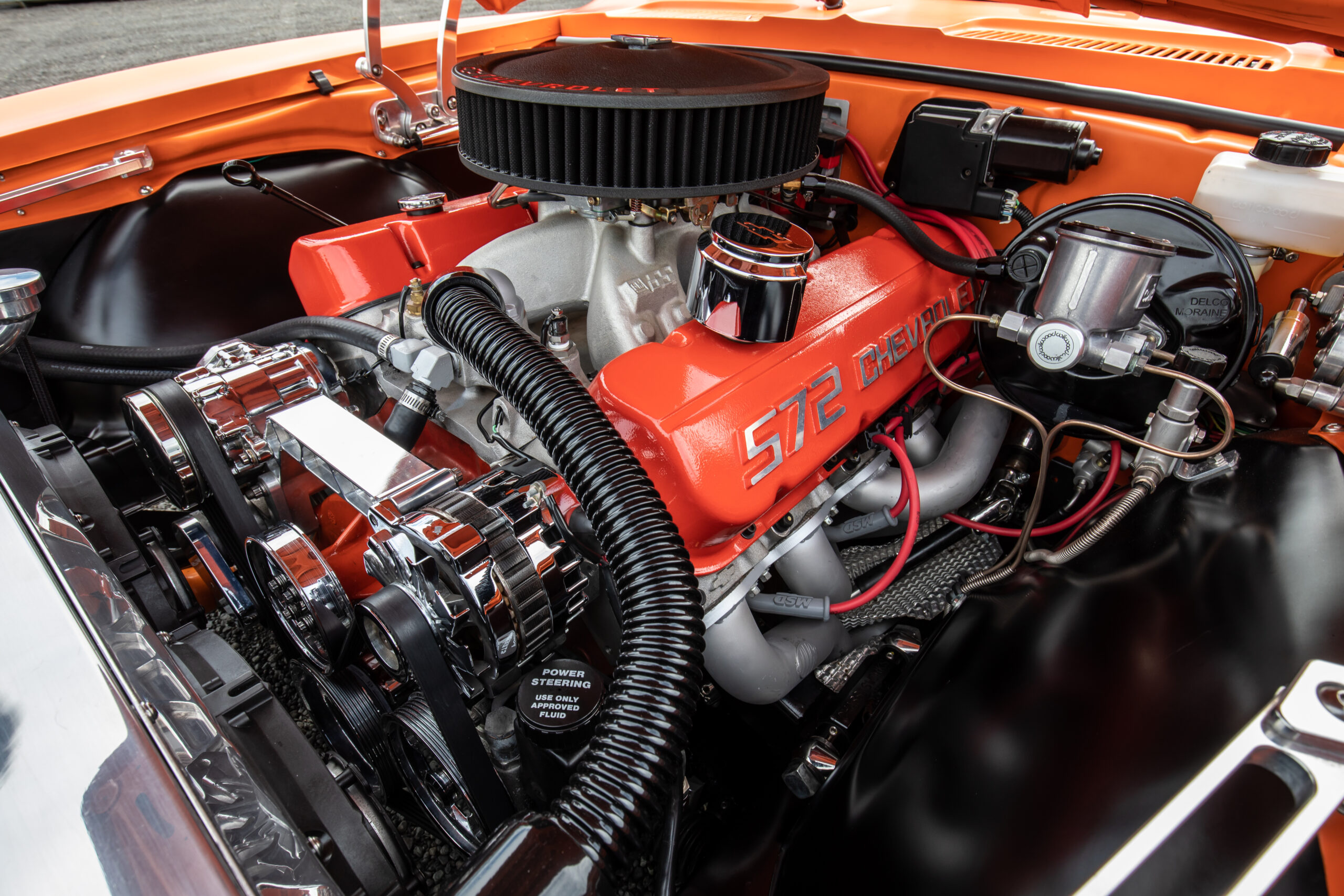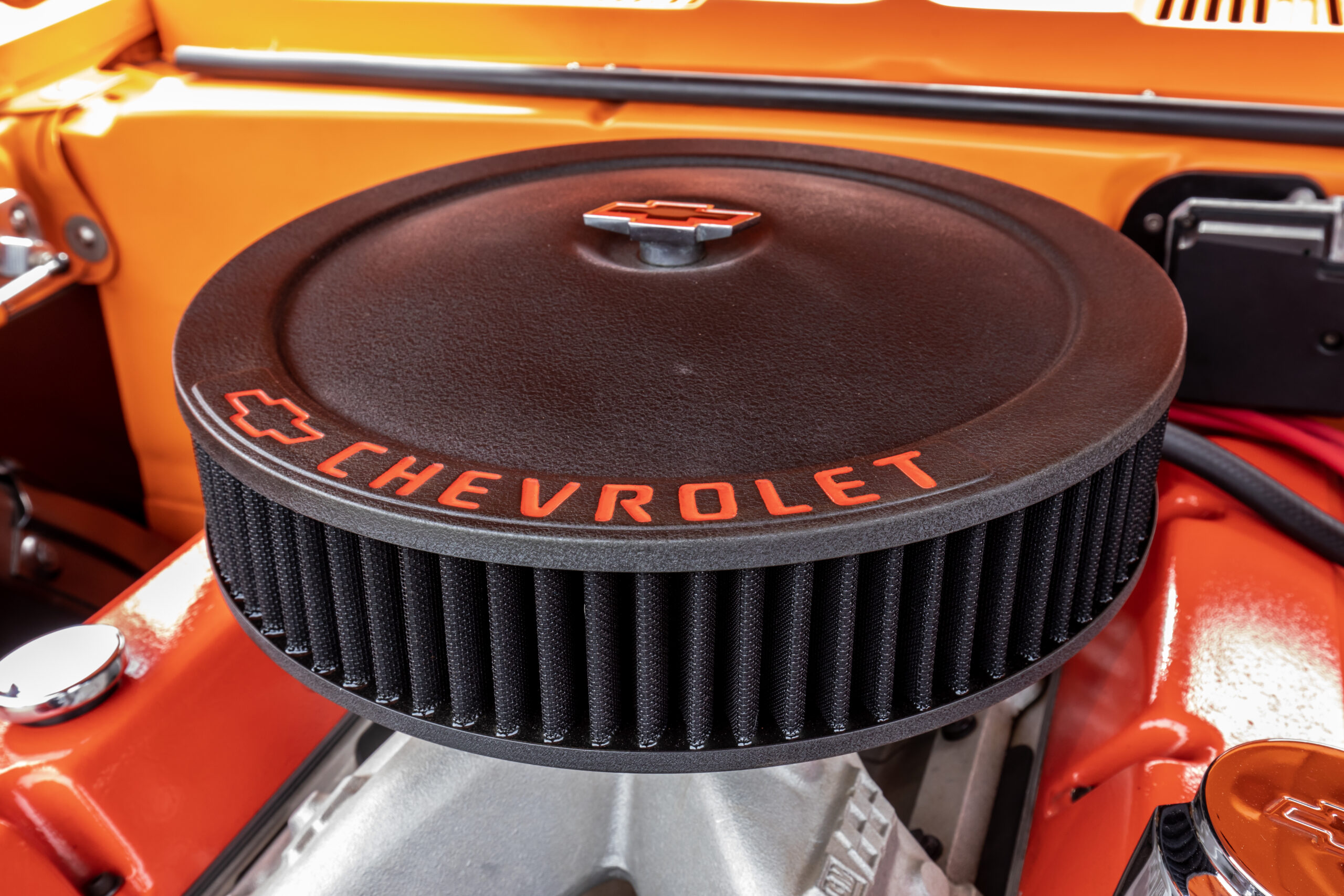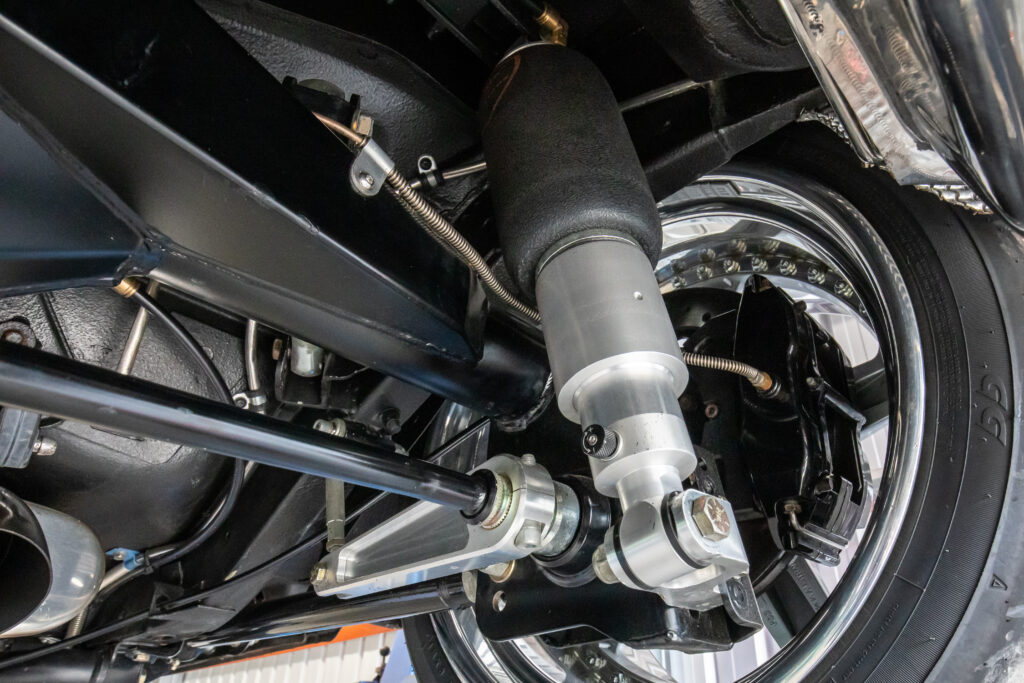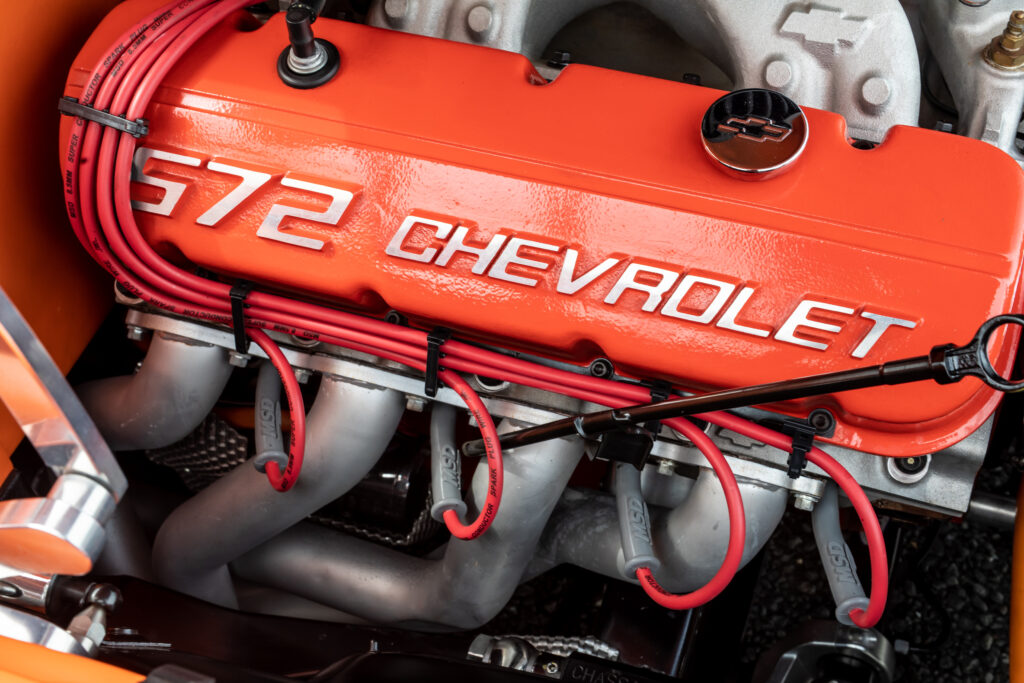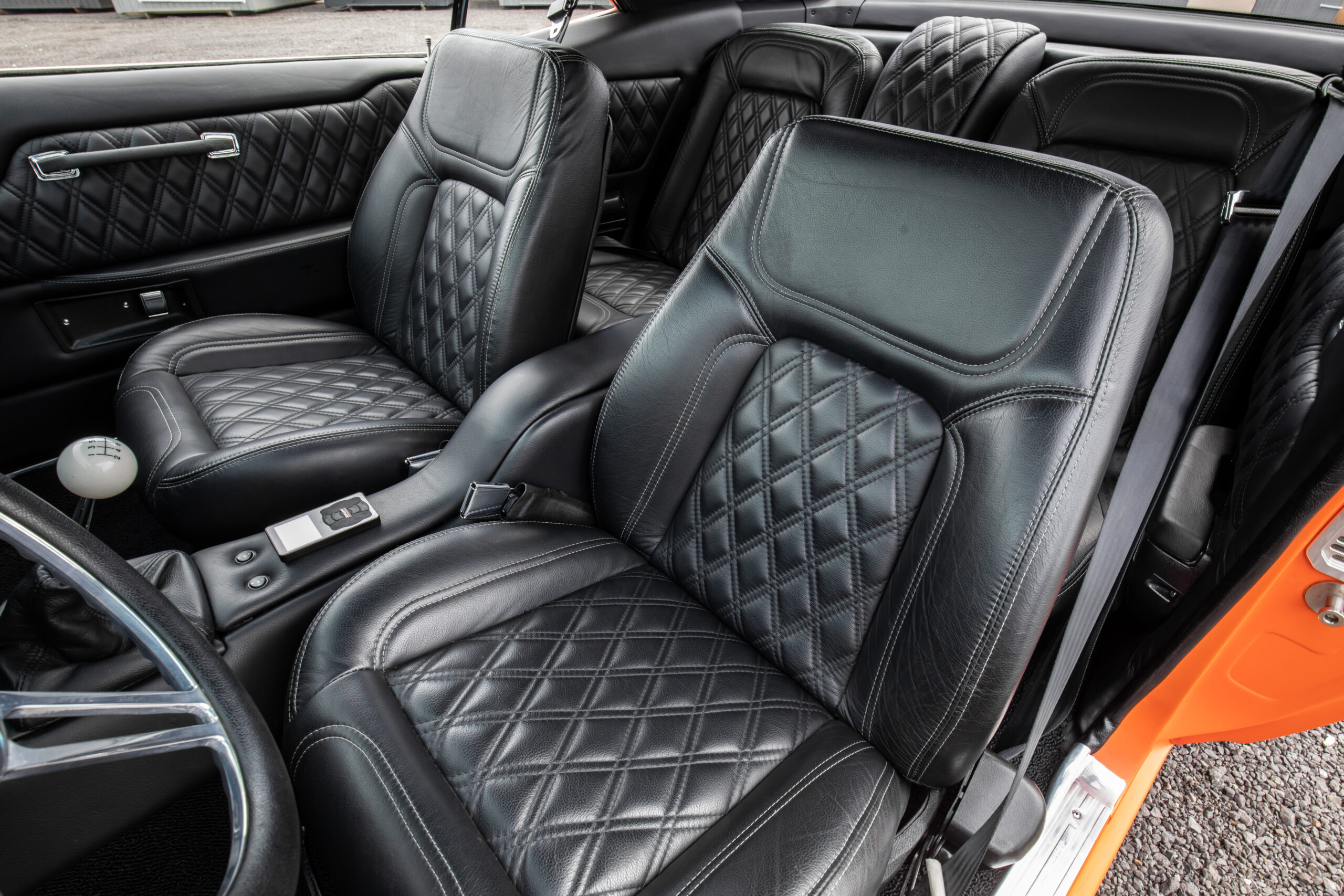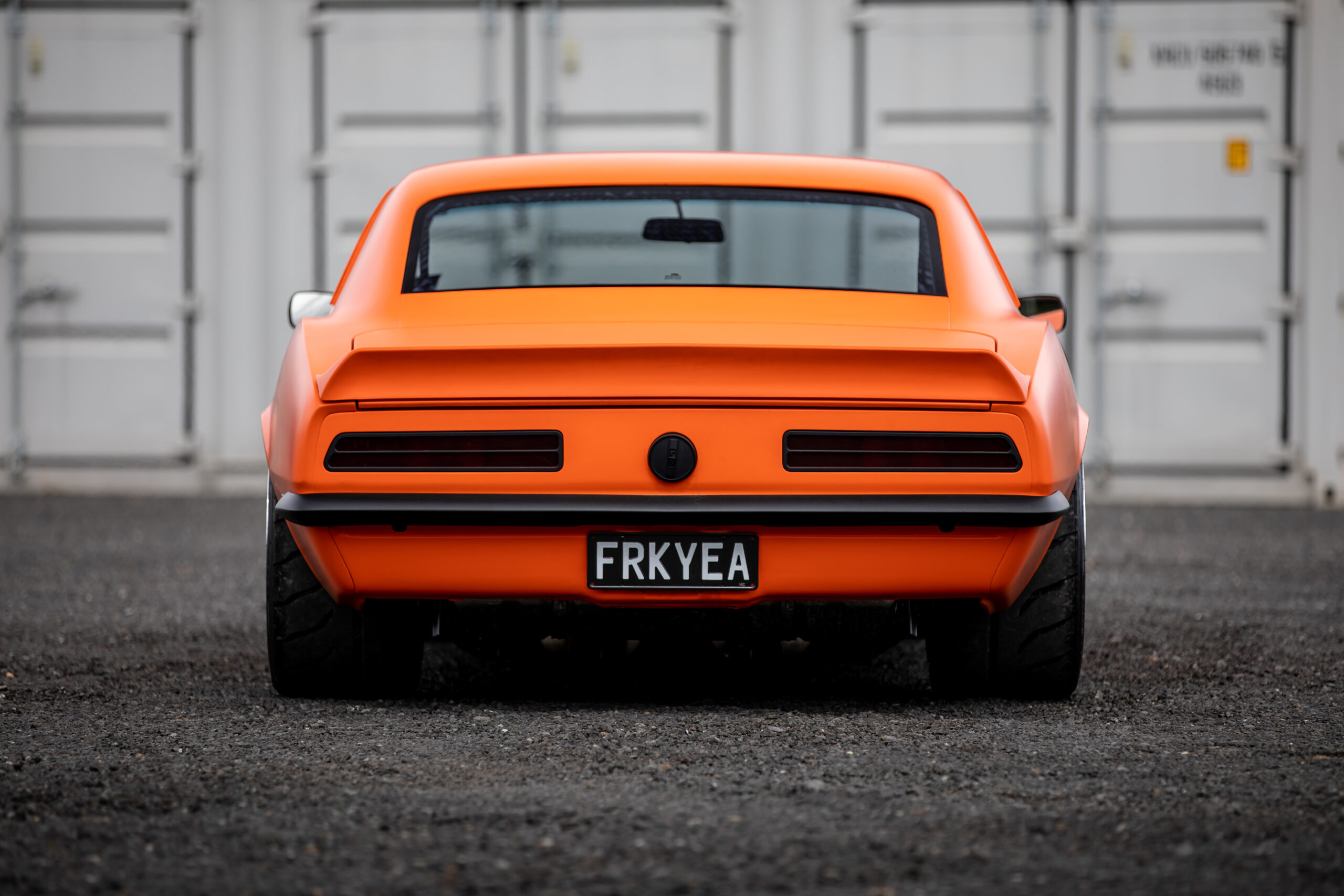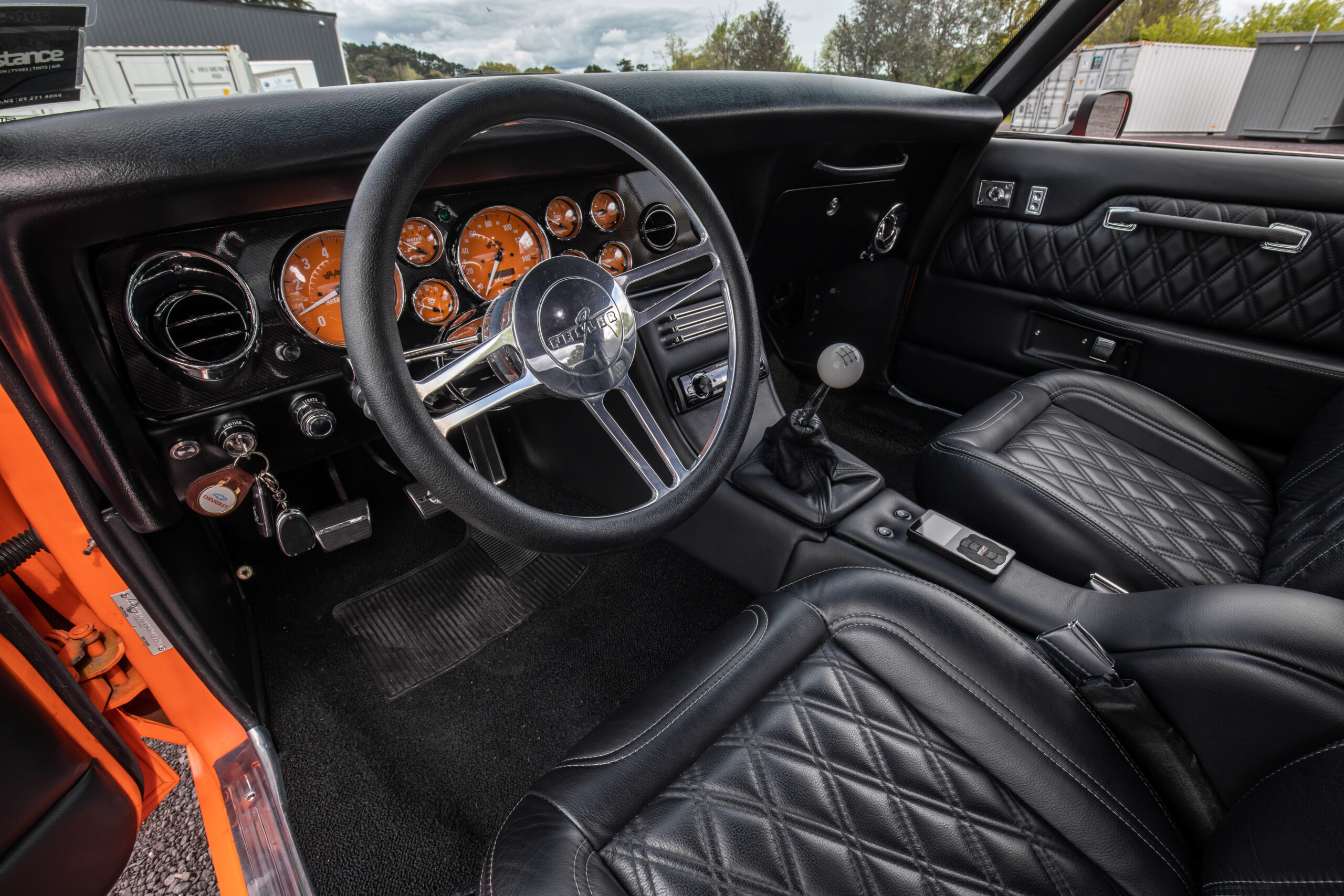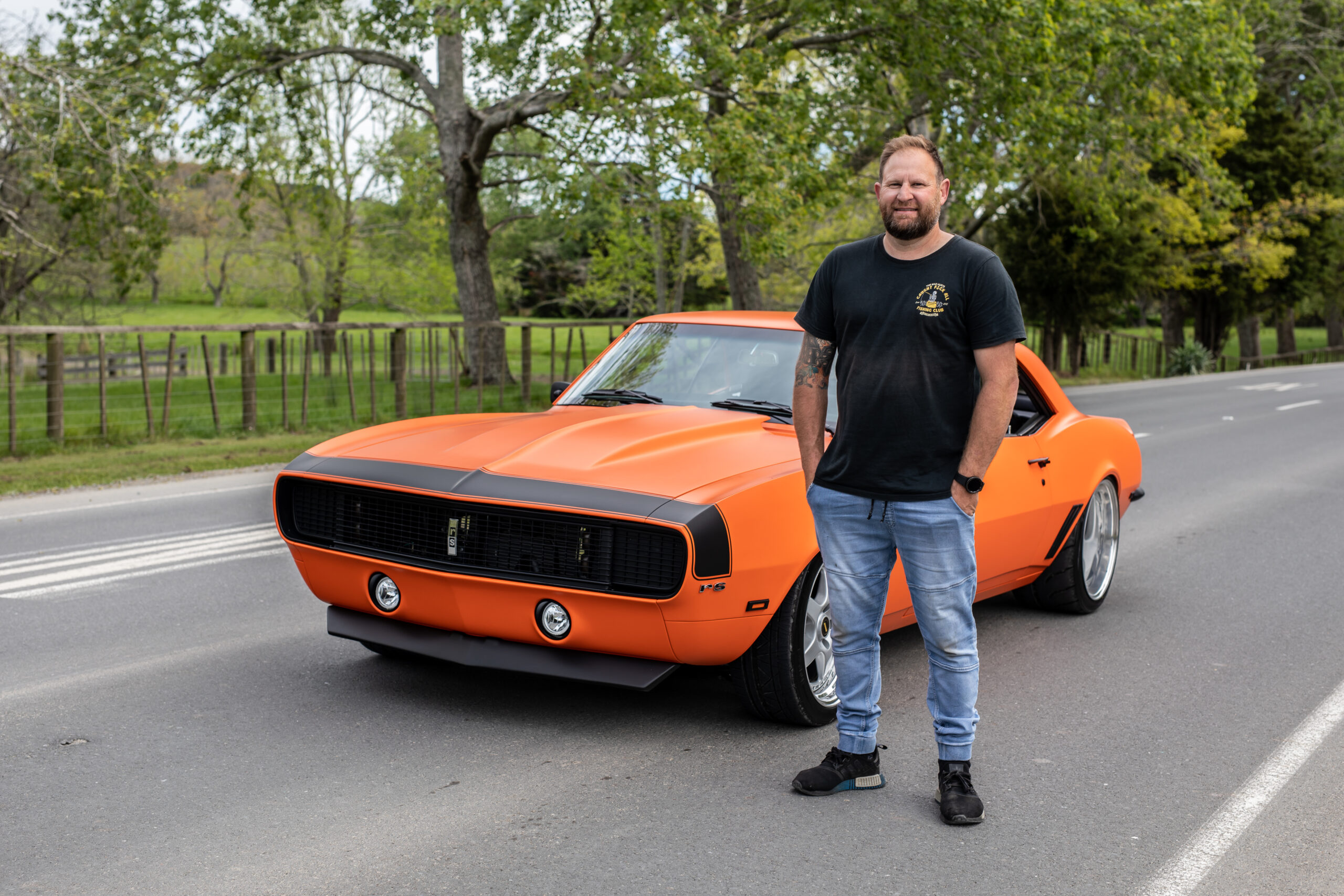Words: Todd Wylie Photos: Glen McNamara
There’s a lot to be said for being in the right place at the right time, or — if you’re a believer in the powers above — being in the place that destiny has guided you to. South Aucklander Dale Williams is all too aware of the benefits of being Johnny on the spot; if he wasn’t, you wouldn’t be reading about this badass Camaro, as it wouldn’t have come to fruition. As a paintless dent-removal technician for Dent Devils, Dale’s on the road all day every day, bouncing between the workshops and private garages where people want dings and imperfections taken out of their pride and joy. We’ve seen some of the work he’s done, and it’s amazing what can be achieved with plenty of skill and the right tools. With Dale’s reputation as the go-to guy to fix imperfections, big or small, it’s no surprise he gets to see some amazing collections.
It was while he was at the man cave of a private collector that the conversation about Dale’s own cars came up. Dale’s had plenty of interesting machines over the years, ranging from rotary-powered Mazda 323s to a number of race cars, from an NZV8 Touring Car through to a very clean VK Commodore that once graced these pages. At the time of the conversation, the VK had just been sold and Dale was on the hunt for a first-gen Camaro. Moments later, the covers were being pulled off an uncompleted project that was sitting in the corner of the owner’s garage.
Despite getting as far as having the car panelled and painted, and dropping a motor in the hole, the owner had decided he was better off sticking to the European vehicles he knew and loved. His desire to build the Camaro had been inspired by a trip to the SEMA show. Having been confronted by so many high-end builds over there, he decided to follow suit — for a while at least. That meant buying up plenty of parts that would take the car from ordinary to extraordinary — parts that Dale is now the proud owner of, having managed to do a deal to purchase it unfinished.
While the Lamborghini Arancio Livrea paintwork, topped by a Matte clear coat, had the car looking mint, it wasn’t quite that way when the original owner got his hands on it. The job of replacing almost every piece of sheet metal on the ’68 shell was taken care of by Phil Otene, who clearly did a remarkable job. With the thoughts of SEMA still running through his head, that owner asked Phil to take on a number of subtle modifications to the body at the same time.
Most American car lovers will be able to tell you the difference between the ’67, ’68, and ’69 Camaros, but this one now breaks some of those boundaries with ’69 rear lights being fitted along with ’69 side vents and ’69 driving lights. While the bodywork was being undertaken, the front bumper was removed, the front and rear windscreens were flush mounted, and a number of Fesler products, such as side markers, were installed. That fresh front end look combined with smoothing at the rear helped to achieve something that’s very hard to do these days — make a Camaro that’s unique.
The previous owner, who’s known for driving Italian exotics, obviously wasn’t shy when it came time to spec a power plant for the car. Rather than mess around with any old crate engine, he went straight for GM’s legendary ZZ572. Displacing 572 cubic inches but with factory GM reliability, and figures stating 620hp and 645 ft·lb of torque, it’s easy to see why the engines have become held in such high regard.
While the car is now essentially what Dale would have built if he’d started the build from scratch himself, he’s made plenty of changes to it to get it looking right. One of those was to get rid of the 22-inch wheels the car was rolling on when purchased. To fill the gap, he put in an order with the good folk from Heads Racing Supplies for a custom set of three-piece Simmons. With it being three-piece, he could spec the offset to suit his plan of slamming the car on the ground — something that he knew was necessary from the time he first laid eyes on it.
That stance wasn’t going to happen without a fair bit of work, but, thanks to help from a mate, Scott Webb, stitching in a set of mini tubs was made simple. Those tubs would allow for the 19×12-inch wheels, wrapped in 315/30R19 Toyo semi-slick tyres, to tuck way up under the rear guards.
That extra real estate was certainly needed, as Dale’s next move was to fit VariShock air struts that would work in conjunction with a previously fitted Chassisworks four-link set-up. Chassisworks isn’t a brand you see a lot of here, largely due to the cost, but the old saying ‘You get what you pay for’ is true, and the previous owner had gone all out in a quest for the best. His purchase included not just the items above but a full replacement front clip complete with rack and pinion steering, coilovers (now removed), and adjustable sway bars.
While the coilovers have been replaced with VariShock air struts, the Chassisworks tubular A-arms have been retained and now work in conjunction with dropped spindles to get the front end low enough for the headers to sit on the floor. Controlling the airbag system is an Air Lift Performance controller that works with an Air Lift Performance compressor and tank system tucked away in the boot.
Although the 18×8.5-inch front wheels fitted straight on, Dale knew a vital piece of work was still required on the rear end — the Chassisworks FAB9 diff needed a few inches sliced off both ends. Like all other parts on the car, it was originally ordered as part of the quest to build the best Camaro possible, so it is filled with a Strange centre and Strange 31-spline axles all wrapped in a strong-backed housing.
Starting with an empty interior, Dale worked through plenty of ideas with Southern Upholstery to come up with the custom look that has been created. The front seats are ’69 Camaro items — not that you’d know it now thanks to the amount of reshaping that was undertaken before they were expertly covered in new hides. The same diamond-stitched treatment has been added to both the custom rear buckets, door trims, and rear side panels. In fact, the only items breaking up the dark upholstery are the billet electric window switches, and the custom-coloured set of Auto Meter gauges that keep a check on the 572.
All up, it took Dale around 18 months from time of purchase to get the car on the road with all his custom touches added. That’s likely a far shorter time than if he’d started the build from scratch, and likely also a better overall outcome, thanks to some of the high-end parts and work that went into it before he got his hands on it. Despite having his good mate, Luke Cosford from LC Auto Refinish, sort out a few touch-ups along the way, Dale says the paint colour is the only thing he’d do differently. However, looking at it now — on the road or parked up sitting on the deck — we’d say there are few colours that would work better than the Lambo orange it’s currently coated in. Only time will tell if Dale gets his way, strips it all down, and paints it; until then, he’s happily on the road behind the wheel of a big block, bagged, and manual Camaro — a car that came about through being at the right place at the right time; the type of situation many of us can only dream of finding ourselves in.
_______________________________________________________________________________________________________
This article originally appeared in NZV8 issue 212






